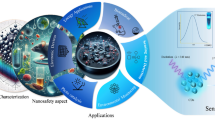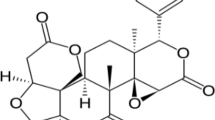Abstract
This paper describes an application and comparison of two stripping voltammetric methods for the speciation of antimony. These methods are based on the formation of the antimony complexes in the presence of two separate chemical receptors, rivastigmine and hematoxylin, and their accumulation on a glassy carbon electrode. They were utilized for the first time to determine Sb(III) and Sb(V) in meglumine antimonite used in the treatment of leishmaniasis. For this purpose, first, the peak current of Sb(III) for a certain amount of drug sample was separately measured using two different receptors. Then, for the same amount of sample, the peak current of total antimony was separately determined in the presence of each receptor by standard addition method after the reduction of Sb(V) ions to Sb(III) with ʟ-cysteine. The current value of Sb(V) was calculated by subtracting the peak current of Sb(III) from that of total antimony for each addition. Then, the calibration curves for the current values of Sb(V) and total antimony were plotted, and the concentrations of Sb(V) and total antimony were determined. The Sb(III) concentration was calculated from the difference between these two values. The Sb(III) and Sb(V) contents were found 16.99 and 82.93 mg cm−3 in the presence of rivastigmine, and 16.59 and 77.96 mg cm−3 in the presence of hematoxylin, respectively. These results showed that both methods were successfully applied to determine Sb(III) and Sb(V) in meglumine antimonite.
Graphic abstract






Similar content being viewed by others
References
Andrade JK, Andrade CK, Felsner ML, Quináia SP, Anjos VE (2017) Microchem J 133:222
WHO (2019) https://www.who.int/news-room/fact-sheets/detail/leishmaniasis. Accessed 08 Oct 2020
WHO (2010) Control of the leishmaniases: report of a meeting of the WHO expert commitee on the control of leishmaniases, Geneva, 22–26 March 2010
Trivelin LA, Rohwedder JJR, Rath S (2006) Talanta 68:1536
Renedo OD, Martínez MJA (2007) Electrochem Commun 9:820
Renedo OD, González MJG, Martínez MJA (2009) Sensors 9:219
González MJG, Renedo OD, Martínez MJA (2007) Talanta 71:691
Santos VS, Santos WJR, Kubota LT, Tarley CRT (2009) J Pharm Biomed Anal 50:151
Salaün P, Frézard F (2013) Anal Bioanal Chem 405:5201
Gadhari NS, Sanghavi BJ, Srivastava AK (2011) Anal Chim Acta 703:31
Zarei K, Atabati M, Karami M (2009) Anal Chim Acta 649:62
González MJG, Renedo OD, Martínez MJA (2005) Talanta 68:67
Vinhal JO, Gonçalves AD, Cruz GFB, Cassella RJ (2016) Talanta 150:539
Cabral LM, Juliano VNM, Dias LRS, Dornelas CB, Rodrigues CR, Villardi M, Castro HC, Santos TC (2008) Mem Inst Oswaldo Cruz 103:130
Łukaszczyk L, Żyrnicki W (2010) J Pharm Biomed Anal 52:747
Séby F, Gleyzes C, Grosso O, Plau B, Donard OFX (2012) Anal Bioanal Chem 404:2939
Renedo OD, Martínez MJA (2007) Anal Chim Acta 589:255
Frizzarin RM, Portugal LA, Estela JM, Rocha FRP, Cerdà V (2016) Talanta 148:694
Cardozo MC, Cavalcante DD, Silva DLF, Santos WNL, Bezerra MA (2016) An Acad Bras Ciênc 88:1
Ferreira SLC, Anjos JP, Felix CSA, Silva Junior MM, Palacio E, Cerda V (2019) Trends Anal Chem 110:335
Fang H, Zhang J, Zhou S, Dai W, Li C, Du D, Shen X (2015) Sens Actuators B 210:113
Karabiberoğlu ŞU, Dursun Z (2017) Electroanalysis 29:1069
Rojas-Romo C, Arancibia V (2015) Electroanalysis 27:1262
Hamza A, Alsaggaf WT, Ahmad W, El-Shahawi MS (2020) Chem Pap 74:2917
Barek J, Peckova K, Vyskocil V (2008) Curr Anal Chem 4:242
Postupolski A, Golimowski J (1991) Electroanalysis 3:793
Laintz KE, Shieh GM, Wai CM (1992) J Chromatogr Sci 30:120
Miravet R, López-Sánchez JF, Rubio R (2004) Anal Chim Acta 511:295
Vardar HS, Gökçel HI, Dilgin Y (2015) Sens Actuators B 209:686
Vardar HS, Dilgin Y, Gökçel HI (2017) Talanta 164:677
Acknowledgements
The authors would like to thank the Ege University Research Foundation (Project No: 11-FEN-90) for funding this project, and also to thank the members of the thesis committee, Dr. Ümran Yüksel, Dr. Sibel Kılınç Alpat, and Dr. Müşerref Arda for their valuable suggestions throughout the study.
Author information
Authors and Affiliations
Corresponding author
Additional information
Publisher's Note
Springer Nature remains neutral with regard to jurisdictional claims in published maps and institutional affiliations.
Rights and permissions
About this article
Cite this article
Vardar Sezgin, H., Dilgin, Y. & Gökçel, H.İ. Speciation of antimony in anti-leishmanial drug using two different chemical receptors and adsorptive anodic stripping voltammetry on glassy carbon electrode. Monatsh Chem 152, 201–208 (2021). https://doi.org/10.1007/s00706-020-02731-1
Received:
Accepted:
Published:
Issue Date:
DOI: https://doi.org/10.1007/s00706-020-02731-1




